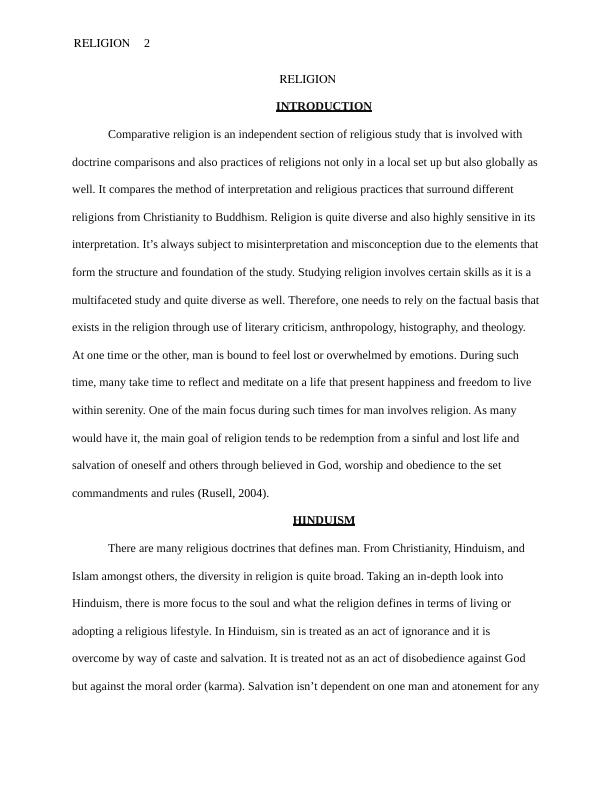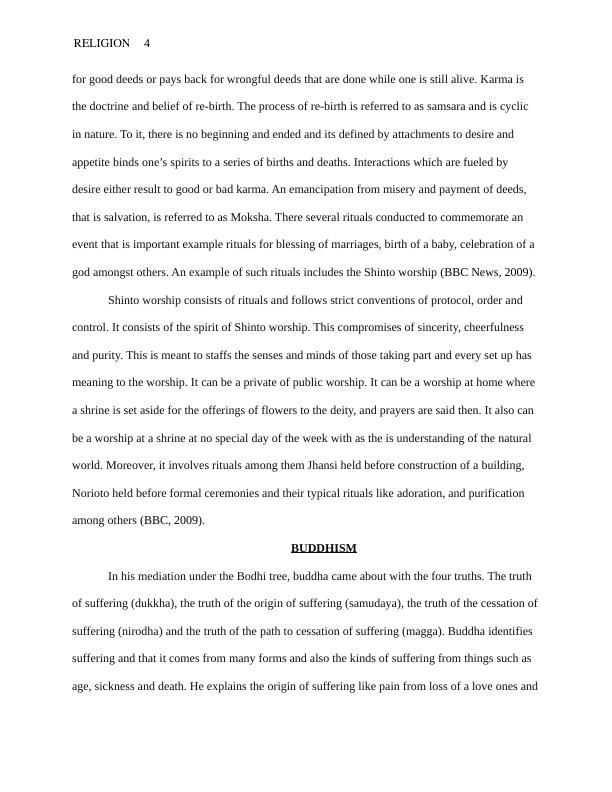Comparative Study of Hinduism, Buddhism, Judaism, and Christianity
Comparative study of various religions including Hinduism, Buddhism, Shintoism, Confucianism, Zoroastrianism, Judaism, Christianity, and Martin Luther.
11 Pages3486 Words306 Views
Added on 2023-06-11
About This Document
This article presents a comparative study of Hinduism, Buddhism, Judaism, and Christianity. It explores their beliefs, practices, and rituals, and highlights the differences and similarities between them. The article also discusses the importance of studying religion and the skills required for it.
Comparative Study of Hinduism, Buddhism, Judaism, and Christianity
Comparative study of various religions including Hinduism, Buddhism, Shintoism, Confucianism, Zoroastrianism, Judaism, Christianity, and Martin Luther.
Added on 2023-06-11
ShareRelated Documents
End of preview
Want to access all the pages? Upload your documents or become a member.
Introduction to Buddhism: Tenets, Siddhartha Gautama, Four Noble Truths, and More
|5
|1145
|360
Compare and Contrast the Five Religions
|5
|1171
|2
Compare and Contrast Essay Hinduism and Buddhism
|5
|652
|255
Worldview of Christianity and Buddhism Essay
|4
|871
|330
The Christian Higher Education Foundation for Learning - PDF
|6
|1353
|62
Religion In The Modern World
|6
|1344
|263




